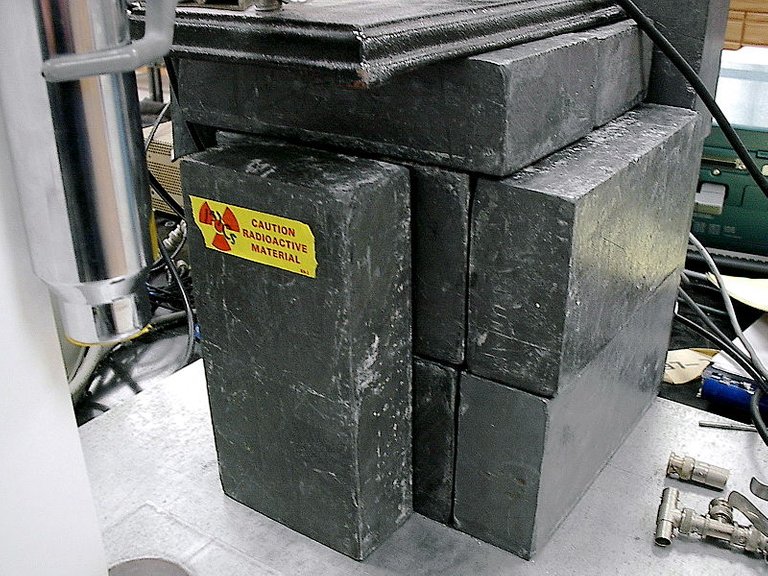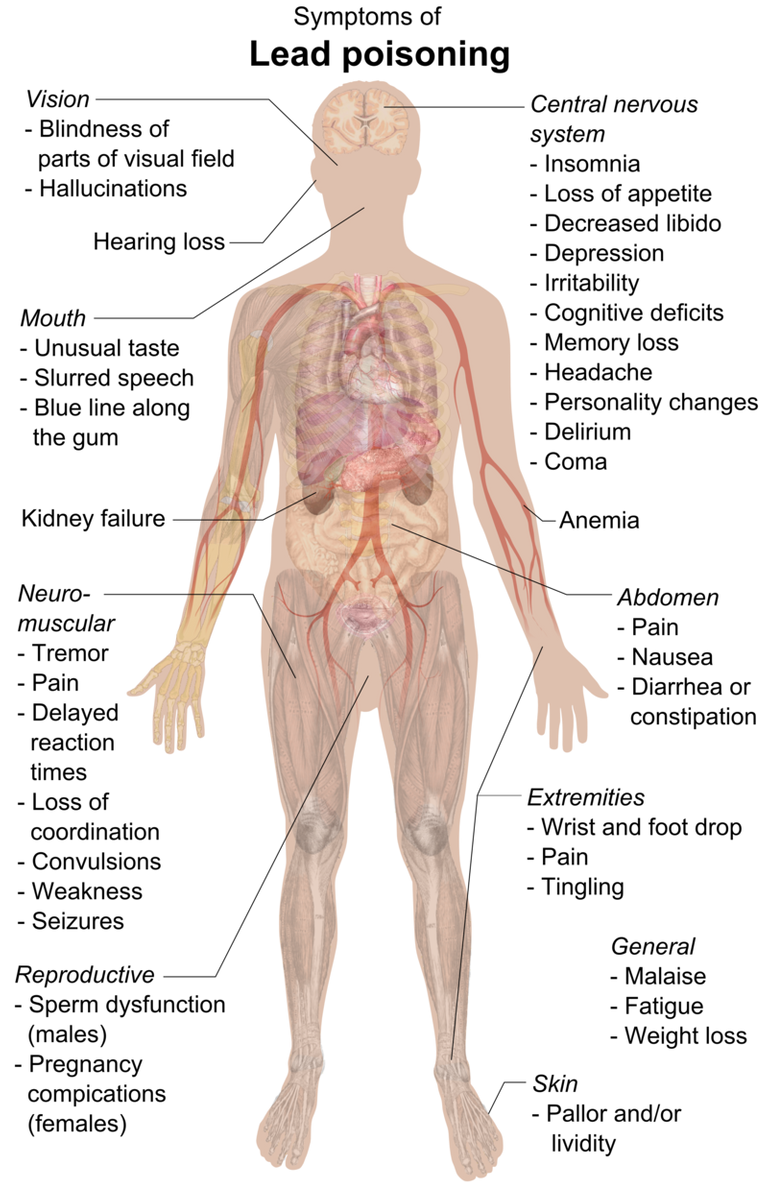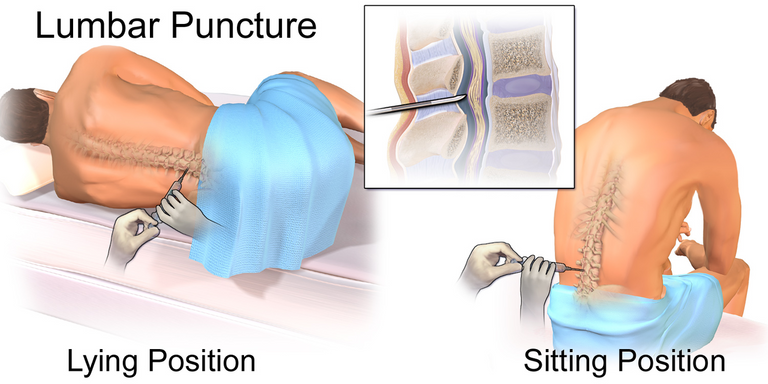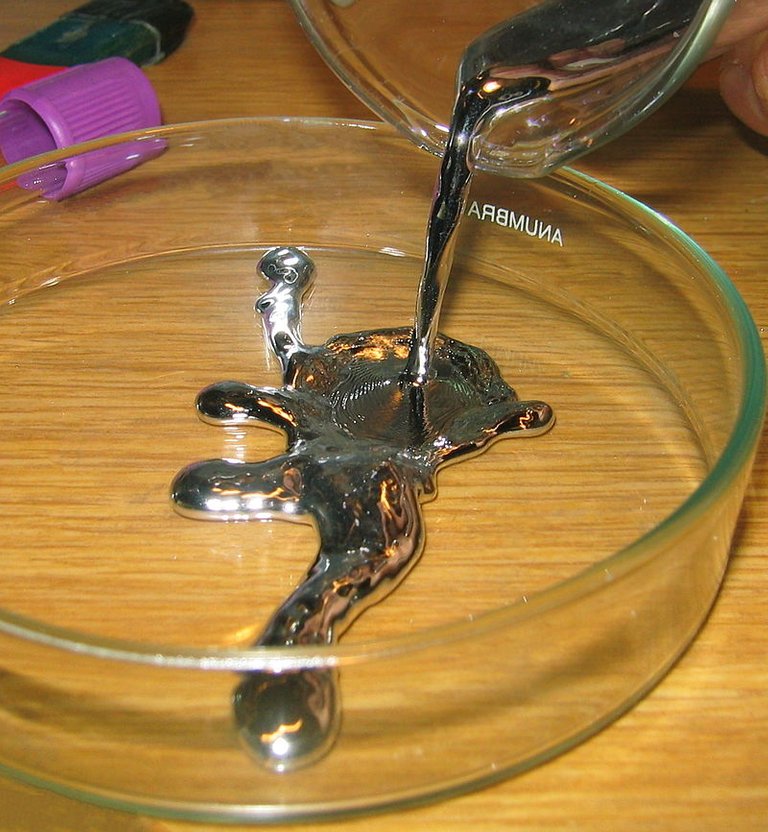Heavy Metal poisoning is a very rare clinical condition and I myself have seen only one case of lead poisoning in the ER directly.
Clinically, the term "heavy metal" has been used as a general term for those metals and semi-metals with potential for human or environmental toxicity.
In actual definition though, heavy metals are chemical elements that have specific gravity that is 5 times that of water.
Wikipedia generally defines heavy metals as
metals with relatively high densities, atomic weights, or atomic numbers.
What then is Heavy Metal Poisoning?
Heavy metal poisoning is basically the toxic accumulation of heavy metals in the soft tissues of the body. Soft tissues are found throughout the body and they comprise generally of other tissues asides from bone tissue and the teeth (which comprise of tooth enamel, dentin, and cementum).
There are many types of soft tissue, including fat, muscle, fibrous tissue, blood vessels, lymph vessels and nerves. Soft tissues surround, support and connect organs and other tissues in the body.
Heavy Metals Involved in Human Poisoning
Cases of heavy metal poisoning are very rare but the heavy metals most often involved in human poisoning are:
- Lead - this is the most widespread toxic metal on earth
- Mercury - this is the third most toxic substance in the environment
- Arsenic
- Cadmium
- Thallium - this was used in several murders in the 1990s

Other rarer cases of heavy metal poisoning may be caused by elements like:
- Aluminum
- Antimony
- Barium
- Bismuth
- Chromium
- Cobalt
- Copper
- Gold
- Iron
- Lithium
- Manganese
- Nickel
- Phosphorous
- Platinum
- Selenium
- Silver
- Tin
- Zinc
Among these heavy metals are trace elements. These are required by the body in small amounts but can be toxic in larger quantities. They include:
- Zinc
- Copper
- Iron
- Cobalt
- Chromium
- Nickel
- Selenium
- Manganese
Most of these trace elements belong to period 4 of the periodic table and are required for normal biological processes.
Zinc is important for the detoxification of toxins in the body by a process called hydroxylation where a hydroxyl group (-OH) is introduced to an organic compound.
Copper and Iron are important elements the body uses for the transport of oxygen and other electrons in the bloodstream.
Cobalt in combination with Vitamin 12 is necessary for cell metabolism.
Chromium is needed by the cells for the utilization of glucose for energy.
Nickel is important for normal cell growth and development.
Selenium is an important antioxidant and necessary element for enzyme production and manganese is required for enzyme regulation.
Without these trace elements, a lot of cellular processes occurring in tissues and organs may not be possible. They are however required in trace quantities.
Modes of Exposure
Heavy metal poisoning occurs when the human body is exposed to the culprit elements. This can be a result of industrial exposure, air or water pollution, foods, medicines, improperly coated food containers, or the ingestion of lead-based paints. The modes of exposure can thus be classified as such:
- Occupational e.g Industrial exposure of lead to workers in a paint factory, Pharmaceutical Manufacturing, Agriculture (pesticides and herbicides) & Dentistry via exposure to vapours (mercury vapour when creating dental amalgams- “silver” fillings).

Environmental e.g water pollution from mercury waste disposal from factories, Air pollution, Soil pollution, Underground water contamination, Heavy metal based glazes on pottery vessels intended to use with food or water.
Deliberate use for suicide e.g Mixing with food: Arsenic and thallium are commonly used in this form.
Direct injection e.g Some boxers in the USA inject mercury under their skin in the belief that it adds muscle bulk.
Used in folk medicine or religious rituals e.g Mercury and Copper.

Affected Populations (Epidemiology)
As earlier stated, heavy metal poisoning is very uncommon, and it depends on environmental exposure e.g. arsenic epidemic in Bangladesh, mercury poisoning in Japan (via fish), lead poisoning in China in 2009, etc. There is no sex predilection for heavy metal poisoning which means it can affect both males and females equally.
Children are usually more susceptible to the toxic effects of heavy metals and are more prone to accidental exposures. There are other factors that can affect the susceptibility to toxicity of heavy metals. These include:
- The metal in question - some metals are more toxic than others
- The total dose absorbed - the higher the dose, the more adverse the effects
- Whether the exposure was acute or chronic - the duration of exposure affects the presenting symptoms
- The age of the person - children and the aged are more susceptible
- Route of exposure - may be oral, via the skin, via inhalation, etc.
Pathophysiology of Heavy Metal Poisoning
For the most part, the element bind to oxygen, nitrogen and sulfhydryl (R-SH) groups in proteins. This results in the alteration of enzymatic activity.
Nearly all organ systems of the human body are involved in heavy metal toxicity. The most commonly involved include the central nervous system (CNS), peripheral nervous system (PNS), gastrointestinal system (GI), hematopoietic system, renal system, and cardiovascular system. To a lesser extent, lead toxicity involves the musculoskeletal and reproductive systems.
Clinical Presentation
The signs and symptoms of heavy metal toxicity may vary depending on the nature of the metal involved and the quantity exposed to.
Some general and non-specific symptoms include nausea and vomiting, metallic taste, diarrhea, headache, abdominal pain, sweating, etc.

Symptoms of lead poisoning. By Mikael Häggström - Own work, CC0, Link
The affected person may also appear with some specific signs which can be elicited upon clinical examination. They include:
- Blue-black line in the gum
- Impairment of cognitive function - refers to multiple mental abilities, including learning, thinking, reasoning, remembering, problem-solving, decision making, and attention.
- Impairment of motor functions like standing, walking, going up and down stairs, running, swimming, and other activities that use the large muscles of the arms, legs, and torso.
- Impairment of language skills which are listening, speaking, reading, and writing.
Diagnosis of Heavy Metal Poisoning
The diagnosis of heavy metal poisoning is often overlooked because the symptoms are generally non-specific.
Heavy metal poisoning may be detected by testing the blood, urine, hair and ther soft tissues for traces of heavy metals. X-rays are also useful.
- Full blood cell count with peripheral smear
Findings may include basophilic stippling of the RBCs on peripheral blood smears. Basophilic stippling is not specific to lead toxicity and may be observed in arsenic toxicity, sideroblastic anaemia, and thalassemia.
The levels of lead in the blood can also be tested for in cases where lead poisoning is suspected.
- Renal function tests - assaying the electrolytes, urea and creatinine levels to access kidney function
- Urine analysis (to look out for proteinuria - excess protein in urine)
- Liver function tests - this is evident by the elevation of free erythrocytic protoporphyrins and inhibition of Delta-aminolevulinic acid dehydratase (porphobilinogen synthase, or ALA dehydratase, or aminolevulinate dehydratase) activity, an enzyme necessary for the biosynthesis of porphyrin.
- Abdominal Xrays - this is indicated and should be done in cases where there is acute ingestion of the heavy metal.
Radio-opacities (areas that appear opaque or white on the X-ray film) demonstrable in the gastrointestinal tract should be cleared by whole-bowel irrigation prior to instituting chelation therapy.
In patients who have injected elemental mercury subcutaneously, radiographs of the suspect areas may show large subcutaneous deposits of a radio-opaque material.
This is because heavy metals are dense metals are opaque to the radiation released by the X-ray machine. Because of this, the rays are reflected back into the X-ray film and a picture is cast.
This is the concept upon which x-ray machines function to create images of internal organs
- Spinal Tap - this is done by a process called a lumbar puncture. It may also be helpful in the diagnosis of lead poisoning. A puncture is made around the lumbar area into the space surrounding the spinal cord to collect cerebrospinal fluid and test for lead. This investigation is quite invasive and is not routinely done unless lead poisoning is suspected.

Treatment of Heavy Metal Poisoning
The main treatment of heavy metal poisoning is to stop exposure to the metal. Once a heavy metal poisoning is suspected, it is important to start treatment as soon as possible to minimize long-term damage to the nervous system and the gastrointestinal tract. The patient should be taken to an emergency room as it is considered a medical emergency
The treatment for most heavy metal poisoning is chelation therapy using a chelating agent. A chelating agent specific to the particular heavy metal is administered orally, intramuscularly or intravenously. These chelating agents act by causing the toxic heavy metal to bind with the drug and be excreted in the urine.
The 3 most common chelating agents are:
- Calcium EDTA (Calcium Disodium Versenate)
- Dimercaprol [BAL-British Anti-Lewisite]
- Penicillamine
Chelation therapy may be lengthy and is effective in lead, mercury and arsenic poisoning. There is although no effective treatment for cadmium poisoning, however, it can be managed symptomatically.
Treatment should also be symptomatic and supportive. Gastric lavage may be helpful in some cases. It is a procedure whereby the stomach is pumped up in other to remove some of the ingested content. This is particularly helpful in acute cases of oral ingestion where the heavy metal is still in the stomach.
In the case of inhaled poisons, affected individuals should be removed from the contaminated environment and placed on respiratory support.
It is important to use masks, face shields, boots and protective clothing to protect from occupational exposure, especially for workers who directly come in contact with heavy metals.
In cases of swelling of the brain (cerebral oedema), treatment with a diuretic called Mannitol, and corticosteroid drugs, along with intracranial monitoring, is required.
Kidney failure may require dialysis or other forms of renal replacement therapy; a kidney transplant may be considered in extreme cases.
In conclusion, heavy metal poisoning is a very rare clinical presentation and this makes it very easy to miss or misdiagnose. You can go a long way though by protecting yourself especially if you belong to one of the classes of people constantly being exposed to these toxic metals.

EPA workers clean up residential mercury spill in 2004 By USEPA Environmental-Protection-Agency - EPA workers clean up residential mercury spill, Public Domain, Link
References
- Davidson's Principles and Practice of Medicine - 24th Edition
- Hoodaji, Mehran & Ataabadi, Mitra & Najafi, Payam. (2012). Biomonitoring of Airborne Heavy Metal Contamination.
- Wikipedia: Toxic Heavy Metal
- Wikipedia: Heavy Metals
- Wikipedia: Vitamin B12
- Wikipedia: Electron Transport Chain
- Medscape: What is the pathophysiology of heavy metal toxicity?
- Medscape: Heavy Metal Toxicity
- Science Direct: Cognitive Functioning
- rarediseases.org: Heavy Metal Poisoning


Check out my recent finance posts:
Do you Understand the Concept of Money? | Let's Talk Finance
Will Worldwide Cryptocurrency Adoption Happen in our Lifetime?😣
Check out my recent non-finance posts:
[ENG/ESP] Short Story: The Ghost of the Past | Relato Corto: El Fantasma del Pasado
My First Entry to Afri-Tunes | AFRI-TUNES WEEK #34/CHAMPION BY FIREBOY DML & D SMOKE
Visiting the Largest Water Park In West Africa: I Became a Child for a Day - Part 1
My First Entry to Afri-Tunes | AFRI-TUNES WEEK #34/CHAMPION BY FIREBOY DML & D SMOKE

Written by @gamsam
All images used are taken by me and copyright free


 Element mercury (Hg), liquid form. By
Element mercury (Hg), liquid form. By
There is a lot of copy and pasted material in this post
You're not kidding. I took down what I could. @pob-curator: copy/paste plagiarism.
Posted using Proof of Brain
The problem is when you are poisoned by with it by drinking bad water … i know people that got mercury poisoned
!1UP
You have received a 1UP from @gwajnberg!
@ctp-curator, @stem-curator, @vyb-curator, @pob-curator, @neoxag-curator
And they will bring !PIZZA 🍕.
Learn more about our delegation service to earn daily rewards. Join the Cartel on Discord.
Very educative post. Another mode of exposure of heavy metals is cosmetic products. Many beauty and bleaching/whitening products contain metals such as arsenic and mecury
Link to the previous post
Reposting previous posts or parts of them without significant additional original content/changes is considered fraud and exploitation of the "Hive Reward Pool".
Publishing such content may result in the account being Blacklisted.
Please refrain from copying and pasting previous posts going forward.
If you believe this comment is in error, please contact us in #appeals in Discord.